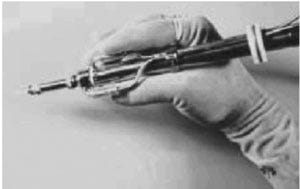MRI and Eye Surgery Advances
February 25, 2016
MRI and Eye Surgery Advances
31. Per-Ingvar Brånemark (1929-2014)
Brånemark, the father of dental implantology, also contributed to breakthroughs in osseointegration. He won the European Inventor Award 2011 for lifetime achievement for his work on dental implants.
32. Paul Lauterbur (1929-2007)
Lauterbur helped lay the groundwork for the development of the MRI. Lauterbur, along with his collaborator, the physicist Peter Mansfield, were awarded the Nobel Prize in 2003. Laterbur's doctoral thesis on the subject was published in the early 1960s. Following that, he would continually work on the technology up until the first human full-body MRI was carried out in the 1970s.
33. Rangaswamy Srinivasan (1929-)
The LASIK innovator Srinivasan had spent the vast majority of his career studying ultraviolet light. An employee of IBM Research, Srinivasan collaborated with surgeons on the use of lasers to reshape the cornea, which would later become known as LASIK (Laser in situ keratomileusis).
34. Charles Kelman, MD (1930 - 2004)
Kelman helped develop the cryoprobe for cataract surgery in 1962. (One such early probe is shown above). The technology soon became a common method for removing cataracts until it was replaced by extracapsular cataract extraction using irrigation and aspiration--a technique also developed by Kelman. 1963, Kelman also helped develop the use of cryopexy, or freezing of retinal detachments, a technique that is still used at present. Kelman is now revered as one of the greatest ophthalmologists of the last century.
35. Luc Montagnier (1932-)
Montagnier is perhaps most famous for the discovery of HIV in the early 1980s, helping lay the groundwork for the development of a laboratory test to detect the presence of virus in the blood. He would win a Nobel for this achievement. He has also helped develop technology that uses electromagnetic waves to detect chronic degenerative diseases in patients' blood plasma.
Continue >>
About the Author(s)
You May Also Like





